Summer Brightening New Ideas丨Unlocking Whitening Peptides, Beating Melanin!
Publish Time:
2025-07-22
Summer skin endures a daily "melanin storm":
☀️ Daytime: High temperature + UV rays → Activate tyrosinase → Melanin synthesis surges
🌙 Nighttime: Staying up late + Slower metabolism → Melanin accumulation → Increased dullness
To regain a brighter complexion, reducing melanin levels in the skin is key. However, sun-damaged skin is fragile, and traditional whitening ingredients can easily cause irritation and redness. Whitening peptides, with their precise targeting and gentle effectiveness, have become a new choice for brands and consumers.
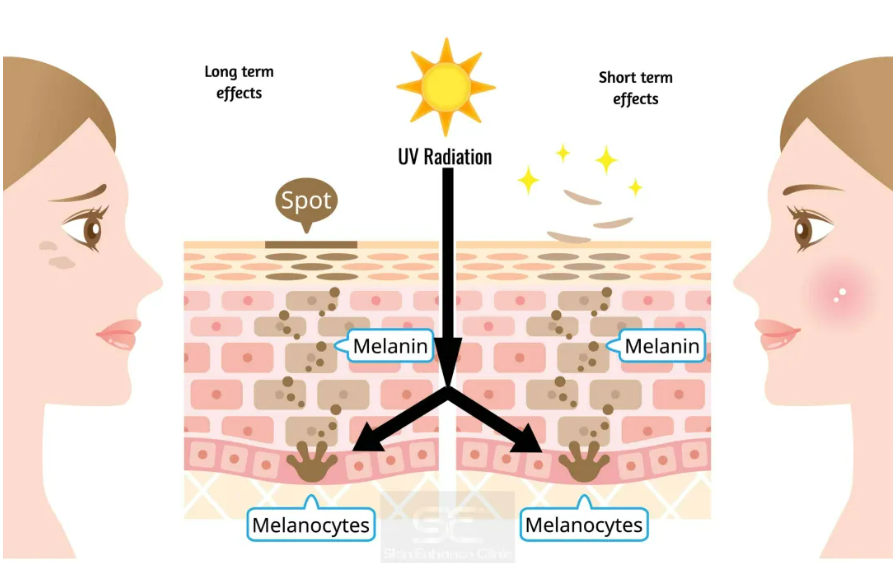
Melanin Formation and Whitening Mechanisms
Melanin biosynthesis occurs in melanosomes within melanocytes in the basal layer of the epidermis. Key enzymes in melanin biosynthesis, tyrosinase (TYR) and tyrosinase-related protein (TRP), are synthesized in the Golgi apparatus, transported to melanosomes, catalyze melanin synthesis and storage within melanosomes, and then melanosomes carrying melanin are transported to keratinocytes. Skin pigmentation results from the accumulation of melanin in keratinocytes. *
Three key enzymes are involved in melanin formation: tyrosinase (TYR), DHICA oxidase (TRP-1), and dopachrome isomerase (TRP-2). Many signaling pathways are also involved, including the MC1R/α-MSH signaling pathway, PI3K/AKT signaling pathway, MAPK signaling pathway, and Wnt/β-catenin signaling pathway.
Whitening and freckle removal are mainly achieved through the following mechanisms: inhibiting the activity of key melanin synthesis enzymes, blocking melanin production pathways, and interfering with melanin transport. In addition, whitening peptides can accelerate skin cell renewal, reduce the deposition of already formed melanin in the epidermis, thereby achieving a brightening effect. ^
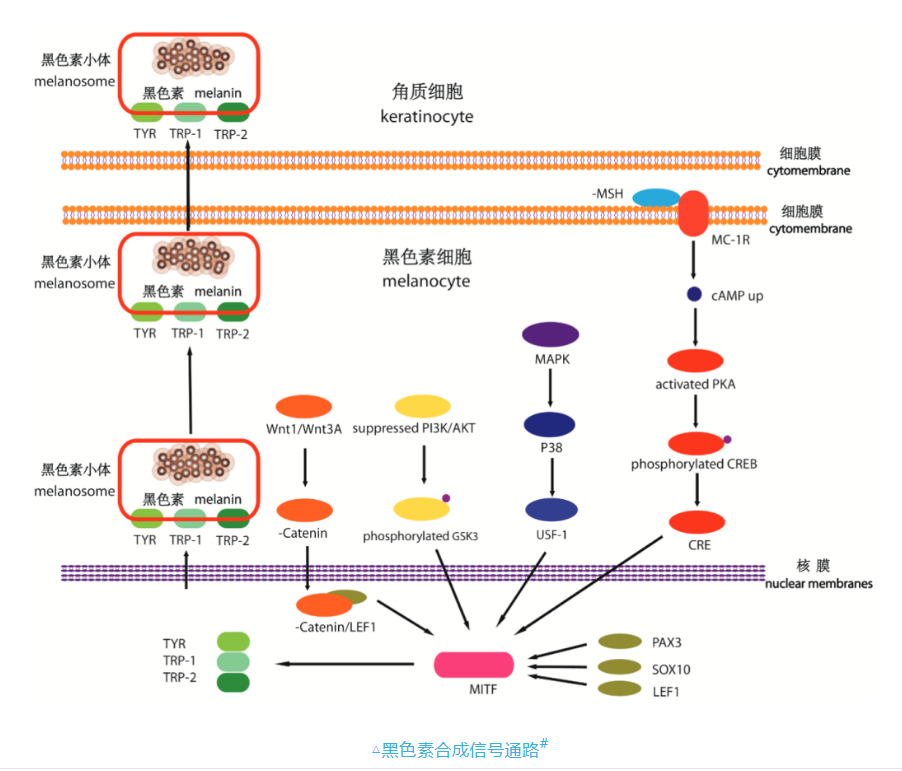
Star Whitening Peptides, Outpacing Melanin
Nonapeptide-1
As a specific α-MSH mimetic peptide, it has high affinity for the MC1R receptor and can competitively block the binding of α-MSH to the MC1R receptor, preventing further activation of tyrosinase and melanin production. Clinical studies show significant whitening effects on Asians, with no cytotoxicity and no effect on melanocyte function. ^
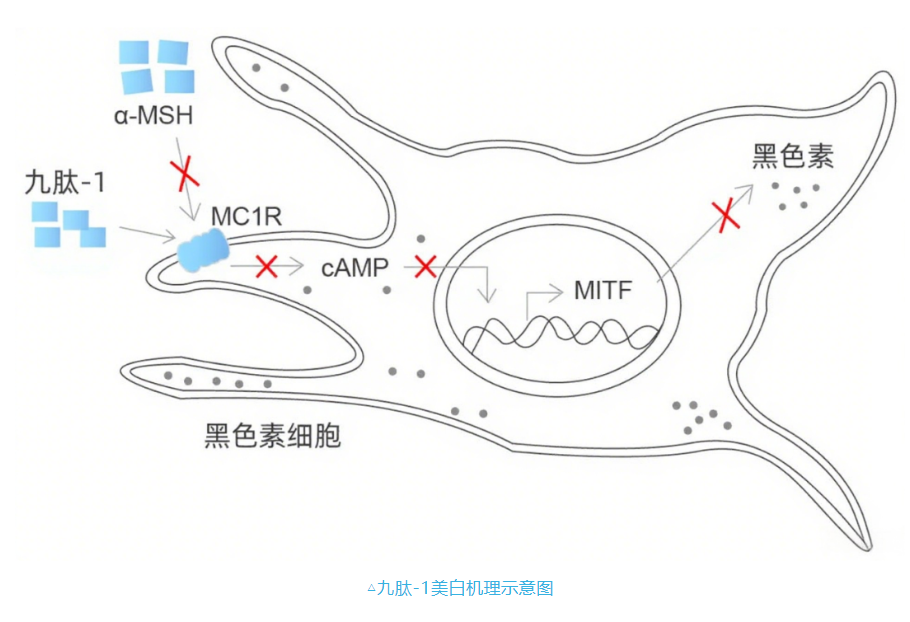
Hexapeptide-2
Its chemical structure also has good affinity with MC1R. It can bind to MC1R on melanocytes before α-MSH, blocking the α-MSH signaling pathway and thus inhibiting melanin production.
In addition, based on epigenetic studies, hexapeptide-2 inhibits melanin production at the gene level by regulating the expression of two miRNAs (miR-29 and miR-218), while simultaneously promoting collagen synthesis, achieving multiple whitening effects.
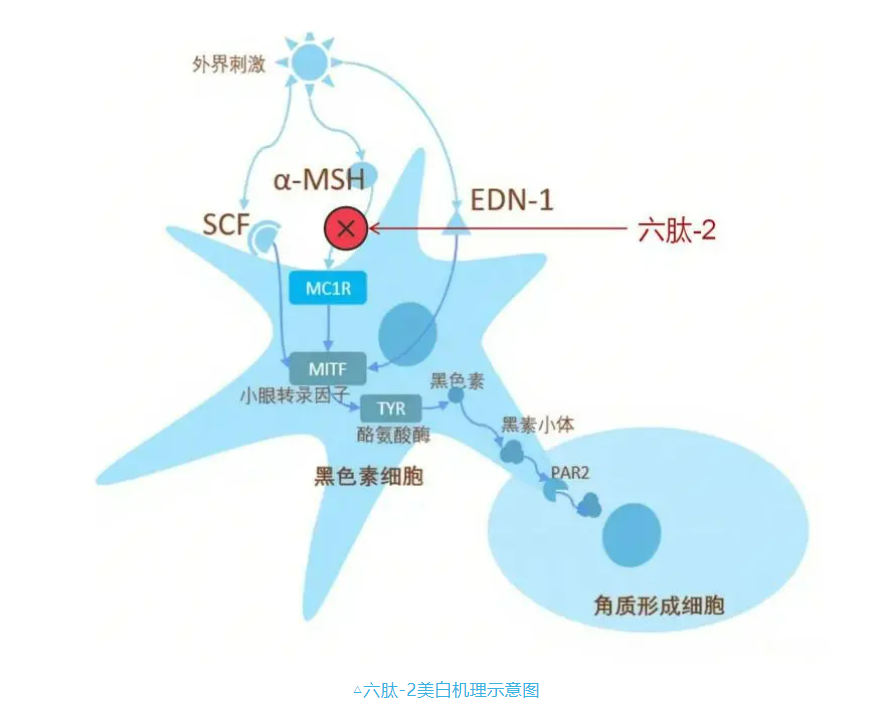
Carnosine
Carnosine, as a bioactive peptide, is not only attracting attention for its ability to inhibit tyrosinase activity in whitening and lightening spots, but also improves skin tone uniformity through its anti-glycation effect.
Numerous studies have shown that carnosine can prevent the formation of advanced lipid oxidation end products (ALE) and advanced glycation end products (AGE), thereby protecting collagen and elastin and slowing down skin aging.
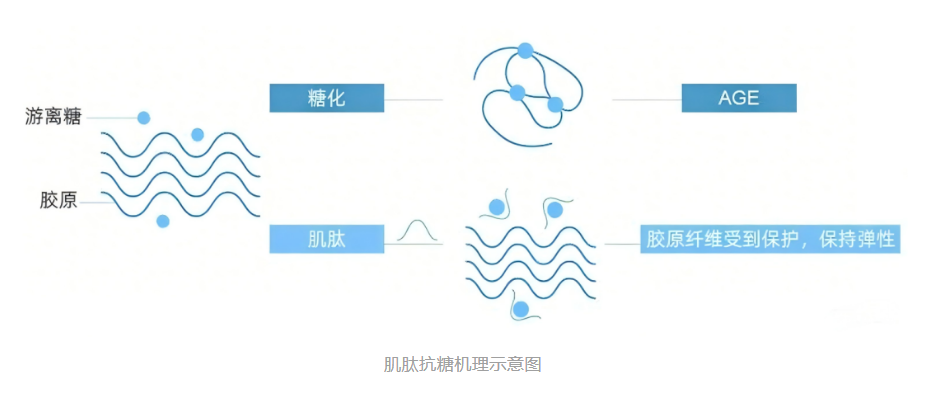
Glutathione
Glutathione is a potent antioxidant widely used in whitening products.
It reduces melanin production by directly inhibiting the activity of tyrosinase. Glutathione, through the reaction between thiol groups and dopaquinone, leads to the formation of a mercapto-dopa conjugate, which can convert melanin from eumelanin to pheomelanin, thereby achieving a whitening effect.
In addition, glutathione can reduce tyrosinase activity in three different ways: thiol groups chelating copper sites can directly inhibit tyrosinase; glutathione hinders the transfer of tyrosinase to premelanosomes; and through its antioxidant action, glutathione indirectly inhibits tyrosinase.

Congen is committed to making sustainable and affordable peptides available for human beauty and health, providing nonapeptide-1, carnosine, glutathione, high-efficiency whitening peptide complex, and oil-soluble whitening peptide complex raw materials. For more product information and sample requests, please contact us:
email:marekting@congenpharm.com, whatsapp:+8613380081396
Source:
Li Bobobo, Ma Jie, Zhu Shiqiang, et al. Research and development of plant whitening raw materials that inhibit melanin synthesis signaling pathways[J]. Journal of Daily Chemical Products Science, 2023, 46(03):21-28.
Feng Xuanqi, Yu Mingyu, Tao Qingxiao, et al. Application prospects of skin active peptides[J]. Bulletin of Dermatology, 2024, 41(06):581-588+606.
Wang Lei, Liu Jun. Research progress on the molecular mechanism of melanin formation[J]. Journal of Xinjiang University (Natural Science Edition), 2019, 36(04):468-474+499.
Prev:
Relevant Information
undefined





